 Having experienced Bandhavgarh, it was high time the Toyota Fortuner got another ‘wild airing’. So, CAR India headed for the Tadoba-Andhari Tiger Reserve for another glimpse of the rare Royal Bengal tiger in its natural habitat
Having experienced Bandhavgarh, it was high time the Toyota Fortuner got another ‘wild airing’. So, CAR India headed for the Tadoba-Andhari Tiger Reserve for another glimpse of the rare Royal Bengal tiger in its natural habitat
The previous day’s drive from Pune to Chandrapur had not been easy, to say the least. We had driven about 850 kilometres on two-lane state highways with sections that were nothing short of craters.This is just by way of giving an inkling of what our Toyota Fortuner had been through.
We had made a mistake when we chose the route to Chandrapur via Nanded and Nirmal instead of via Aurangabad. The roads after Nanded were in tatters at most places, at times they were non-existent. The Fortuner proved its mettle through the tough terrain, though, and we fetched up at Chandrapur by 11.30 in the night.
 The car’s air-conditioner had kept us comfortable throughout the day, so what lay outside was completely unexpected. A temperature in excess of 40 degrees Celsius at 11.30 pm was certainly not something we had bargained for as we came out of the Fortuner! The next day was going to be even worse, what with us roaming about in an open Maruti Gypsy with the mercury soaring above 45 degrees Celsius. That, however, would be no deterrent, for we were in Chandrapur for a sight of the big cat in the Tadoba-Andhari Tiger Reserve.
The car’s air-conditioner had kept us comfortable throughout the day, so what lay outside was completely unexpected. A temperature in excess of 40 degrees Celsius at 11.30 pm was certainly not something we had bargained for as we came out of the Fortuner! The next day was going to be even worse, what with us roaming about in an open Maruti Gypsy with the mercury soaring above 45 degrees Celsius. That, however, would be no deterrent, for we were in Chandrapur for a sight of the big cat in the Tadoba-Andhari Tiger Reserve.
The tiger’s masterful attitude and majestic stance had a magnetic pull for us. Now the urge to spot it in its natural habitat was too strong to resist. The shutter bug in me was already craving for the pictures that I could flaunt once back home. However, as subsequent developments proved it, getting them wasn’t as easy as I had thought!
The tiger reserve is spread over 625 square kilometres of land, making it the largest in Maharashtra. However, there are just about 45 tigers in that vast expanse, which works out to onetiger per 14 sq km. That made it all the more difficult to actually get to see one of them. There are three ranges in Tadoba-Andhari where tiger spotting is frequent and we decided to cover the maximum that we could over the period of two days at our disposal. The first day was dedicated to the Mohorli and Kolsa ranges. The authorities allow not more than 27 vehicles to venture in for safari trips in both the ranges. So, we booked one Gypsy the night before and had it parked in a queue at the entrance, so that we got an assured entry. It’s quite funny, nay, ridiculous, that you need to park your vehicle in a queue on the eve to ensure your entry the next morning.
The first day was dedicated to the Mohorli and Kolsa ranges. The authorities allow not more than 27 vehicles to venture in for safari trips in both the ranges. So, we booked one Gypsy the night before and had it parked in a queue at the entrance, so that we got an assured entry. It’s quite funny, nay, ridiculous, that you need to park your vehicle in a queue on the eve to ensure your entry the next morning.
Mohorli started offering us glimpses of the wildlife of Tadoba as soon as we entered the range. A sloth bear crossed our path and went deep into the jungle. Hold on. Did I say that the sloth bear crossed ‘our’ path? Well, sorry for that, because actually we were in its territory. Not just in the bear’s, but in that of hundreds of its fauna brethren. The chirps and twitters our ears heard kept our eyes flitting from tree to tree for a glimpse of those birds. As we proceeded towards the interior of the Mohorli range, we had frequent sightings of animals like the sambhar, bison and monkeys. We scoured every waterhole where the possibility of the big cats coming to quench theirthirst was high, but with no success. The morning went past with the sighting of just pugmarks.
 After a four-hour-long safari, we returned to Chandrapur for lunch. The mercury had shot up to a temperature I had never experienced before. In desperate need of an air-conditioned restaurant, we skipped the small eateries around the forest area and headed for the town.
After a four-hour-long safari, we returned to Chandrapur for lunch. The mercury had shot up to a temperature I had never experienced before. In desperate need of an air-conditioned restaurant, we skipped the small eateries around the forest area and headed for the town.
Some much-needed nourishment and a power nap over, we hit the Kolsa range in the evening. This time, the drive through the forest took us to the Tadoba Lake. A myth has it that highly thirsty members of a baraat going through the forest stopped at that place. Someone asked the groom to dig a hole at that spot, rightly surmising that there was underground water. As the groom dug up the ground, he was treated to a fresh water spring, which later formed the lake. The myth apart, this lake was indeed a beautiful sight to behold. It takes care of water supply to the few settlements that still exist inside the forests of Tadoba-Andhari. Roaming through the jungle, we went from waterhole to waterhole in search of the tiger, but returned with nothing more than pictures of an innumerable variety of birds. 
 Hopes high once again, we ventured into the Mohorli range again the next day in search of the elusive one. Today our plan was different. We decided not to roam about too much. Instead, we parked our car at the main water reservoir and decided to wait for the tiger throughout the day. Mr Dhamankar, our safari guide and driver, took us to a small pond that was surrounded by dense vegetation. As we came close and parked our car in the tranquil surroundings, the first thing that we heard was the call of a barking deer, telling one and all that a tiger was in the vicinity. We sat still. The slightest movement in the bushes grabbed our attention. Not once, though, was it due to an approaching tiger. Three hours later, disappointed, we decided to head back.
Hopes high once again, we ventured into the Mohorli range again the next day in search of the elusive one. Today our plan was different. We decided not to roam about too much. Instead, we parked our car at the main water reservoir and decided to wait for the tiger throughout the day. Mr Dhamankar, our safari guide and driver, took us to a small pond that was surrounded by dense vegetation. As we came close and parked our car in the tranquil surroundings, the first thing that we heard was the call of a barking deer, telling one and all that a tiger was in the vicinity. We sat still. The slightest movement in the bushes grabbed our attention. Not once, though, was it due to an approaching tiger. Three hours later, disappointed, we decided to head back. 
 Two days spent in the scorching heat of the reserve and nary a single glimpse of the beautiful beast. No doubt, the Royal Bengal has become a rare sight. On our way back, I recalled having seen a hoarding at the entrance of the reserve, showing a palmist reading a
Two days spent in the scorching heat of the reserve and nary a single glimpse of the beautiful beast. No doubt, the Royal Bengal has become a rare sight. On our way back, I recalled having seen a hoarding at the entrance of the reserve, showing a palmist reading a  tourist’s palm and saying, “Nobody can assure you a tiger and that is the fun of it.” Fun probably it wasn’t for us, who had come all the way from Pune, having driven almost a thousand kilometres on mostly unfriendly surfaces. However, lucky Mr Kakubhai Kothari, our fellow traveller and ace photographer, spotted one in the Mohorli range while we were roaming in its Kolsa counterpart. He generously gave us the pictures taken by him. Those pictures have added to my craving to visit Tadoba-Andhari and try my luck once again.
tourist’s palm and saying, “Nobody can assure you a tiger and that is the fun of it.” Fun probably it wasn’t for us, who had come all the way from Pune, having driven almost a thousand kilometres on mostly unfriendly surfaces. However, lucky Mr Kakubhai Kothari, our fellow traveller and ace photographer, spotted one in the Mohorli range while we were roaming in its Kolsa counterpart. He generously gave us the pictures taken by him. Those pictures have added to my craving to visit Tadoba-Andhari and try my luck once again.
I will be out again in search of the tiger in its natural habitat. Ranthambor, here we come!

 Story: Adhish Alawani
Story: Adhish Alawani
Photography: Sanjay Raikar
Shoot to thrill
Before setting out for Tadoba, we were warned by friends that, temperature-wise, the place was one of the hottest tiger reserves in India. Hence we decided to travel light. Canon, our photography partner, produces many high-end cameras and lenses that would have been ideal for the trip, but we chose the modest and lightest equipment that would not require an extra hand to lug it along. We selected two D-SLR bodies (Canon EOS 7D and EOS 550D) and two lenses (70-200mm f/4L USM and 15-85mm f/3.5-5.6 IS USM). Both the camera bodies featured APS-C size sensors and, therefore, at 200mm, the lens provided an effective focal length of 320mm. Furthermore, the 7D’s 18-megapixel resolution would allow us to crop the images without compromising the image quality required for printing. 


 Once in the reserve, we were fully convinced about the choice of our equipment. We could not find any tiger in the reserve, partly because access to many areas of the park was restricted, a tiger census being under way. However, the tiger is not the only animal you find in a tiger reserve. We could see spotted deer (chital), barking deer, sambar, common langur, bear, wild boar and Indian Gaur. Our equipment was adequate to capture them the way we wanted. The images turned out crisp even though the 70-200mm f/4 lens was not equipped with image stabilization, thanks to its light weight and comfortable grip.
Once in the reserve, we were fully convinced about the choice of our equipment. We could not find any tiger in the reserve, partly because access to many areas of the park was restricted, a tiger census being under way. However, the tiger is not the only animal you find in a tiger reserve. We could see spotted deer (chital), barking deer, sambar, common langur, bear, wild boar and Indian Gaur. Our equipment was adequate to capture them the way we wanted. The images turned out crisp even though the 70-200mm f/4 lens was not equipped with image stabilization, thanks to its light weight and comfortable grip.

 The 7D was fast in focusing and with an impressive eight-frames-per-second high speed continuous shooting, we were able to capture the expression of a calling langur and a wild boar dashing across the road. Tadoba is also rich in avian fauna. We could see many varieties of birds at a single waterhole, including Magpie Robin, Indian Pitta, Oriental White-eye, Green Bee-eater and Paradise flycatcher, among others. This was one time, though, when we wished we had a lens with a longer focal length!
The 7D was fast in focusing and with an impressive eight-frames-per-second high speed continuous shooting, we were able to capture the expression of a calling langur and a wild boar dashing across the road. Tadoba is also rich in avian fauna. We could see many varieties of birds at a single waterhole, including Magpie Robin, Indian Pitta, Oriental White-eye, Green Bee-eater and Paradise flycatcher, among others. This was one time, though, when we wished we had a lens with a longer focal length!
Tadoba taught us a great lesson – that you need more that just equipment and will power to photograph tigers. Though our group was not lucky this time, we could see some satisfied people who did not know how to contain their excitement after seeing a tiger with cubs. We hope we will be lucky to find a tiger the next time.
 Mapping our drive
Mapping our drive
Navigation systems used abroad are truly awesome and the practice of not carrying map books is fast gaining acceptance in India, thanks to the competent GPS devices that are available in our market.
However, I had not relied upon them completely before and so, on the trip to Tadoba, I decided to do my homework before leaving. Taking the help of the most beloved search engine, I routed the way to Chandrapur via Nanded and Nirmal. Unfortunately, this route turned out to be a nightmare. Not only were the roads slow, they were badly broken at most places and non-existent in certain sections. Battling the craters, we took over 15 hours to reach our destination.
hough, I decided to let MapMyIndia’s navigation system undertake the task of setting the route for me.
 To my surprise, the GPS jotted a slightly longer route than the one I had taken on my way to Chandrapur. It was about 70-80 km longer, which led me to dread one extra hour of driving. However, it turned out to be a completely different story. The navigation system had found out the quickest way that included better toll highways (which were worth every paisa that we paid). Not only did we manage to be back home in less than 12 hours (saving three hours straightaway), but also could enjoy a journey far more comfortable. Kudos to MayMyIndia!
To my surprise, the GPS jotted a slightly longer route than the one I had taken on my way to Chandrapur. It was about 70-80 km longer, which led me to dread one extra hour of driving. However, it turned out to be a completely different story. The navigation system had found out the quickest way that included better toll highways (which were worth every paisa that we paid). Not only did we manage to be back home in less than 12 hours (saving three hours straightaway), but also could enjoy a journey far more comfortable. Kudos to MayMyIndia!
About the Tadoba-Andhari
Tiger Reserve
The Tadoba-Andhari Tiger Reserve was declared a National Park back in 1955. Not only is it the oldest National Park in the state of Maharashtra, but also the largest wildlife reserve spread over an area of 625 sq km (116 sq km of those form the National Park and 509 sq km the Wildlife Sanctuary). Basically, the tiger reserve comprises two areas – Tadoba, which gets its name from the Tadoba lake in it, and Andhari, which gets its name from the river Andhari flowing through this range. There are about 80 different species of mammals, 280 species of birds, 100 species of butterflies, 26 species of spiders, 30 species of reptiles (including 25 species of snakes), five species of amphibians and 23 species of fish in the Tadoba-Andhari Tiger Reserve. The common avian fauna of 280 species recorded includes 50 species of migratory birds and 158 species of resident birds.
The closest town to the reserve for good accommodation and food is Chandrapur, which is about 25 kilometres from the reserve.

 CAPTIONS:
CAPTIONS:
1.Pugmarks often give rise to a lot of hope of a tiger sighting. However, sometimes you just have to accept the fact that he isn’t there when you have reached and that you aren’t lucky
2.The Toyota Fortuner had to deal with a lot of off-roading, something that it is best at
3.(Above) Deer graze on the bank of the Tadoba Lake
4.(Below) The reserve boasts of a variety of wildlife species
5.Visitors have to park their vehicles in a queue outside the entrance to the reserve to book their entry. This needs to be done hours before the gates open
6.Visitors have to park their vehicles in a queue outside the entrance to the reserve to book their entry. This needs to be done hours before the gates open
7.The remnants of a ‘happy meal’ enjoyed by a tiger. Also a clue to its perambulations within the reserve
8.Extreme heat forces the authorities to refill the waterholes frequently









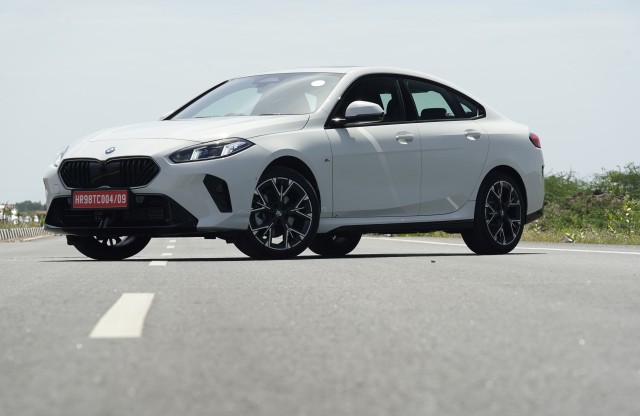
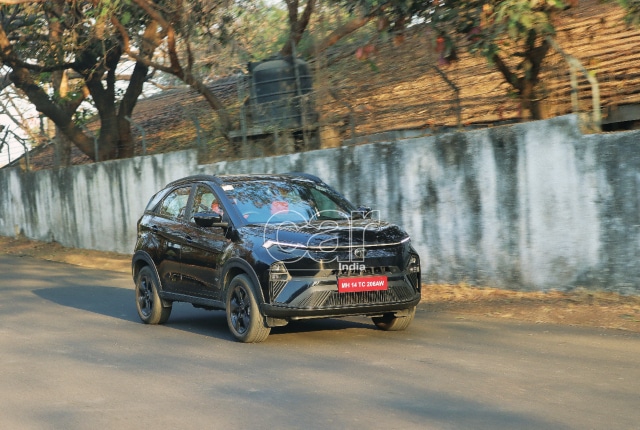



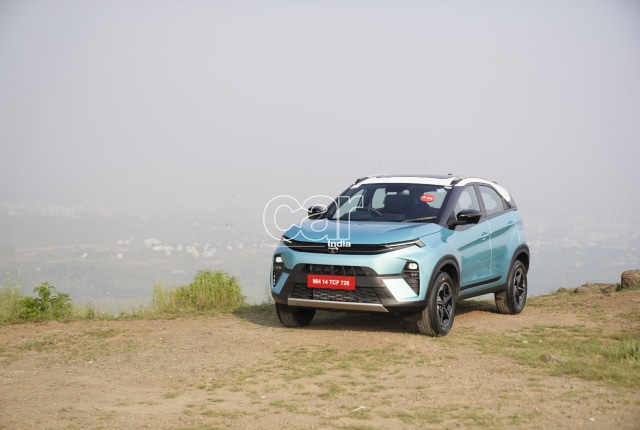
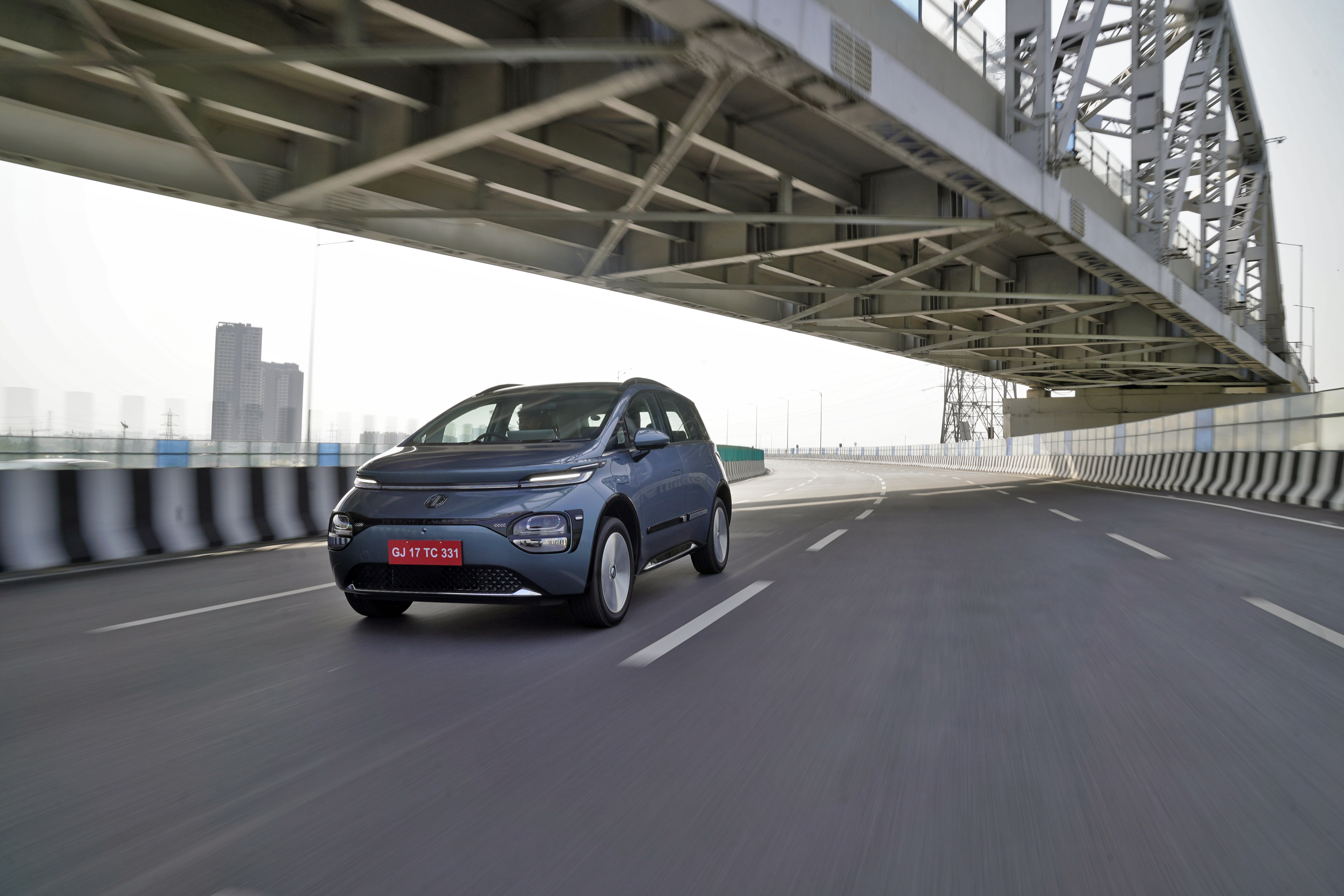
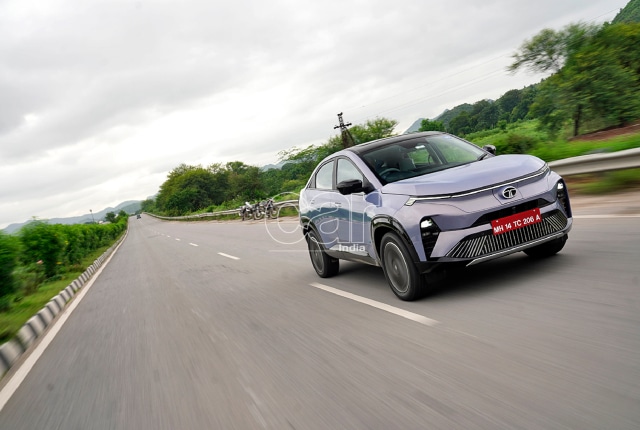





Leave a Reply